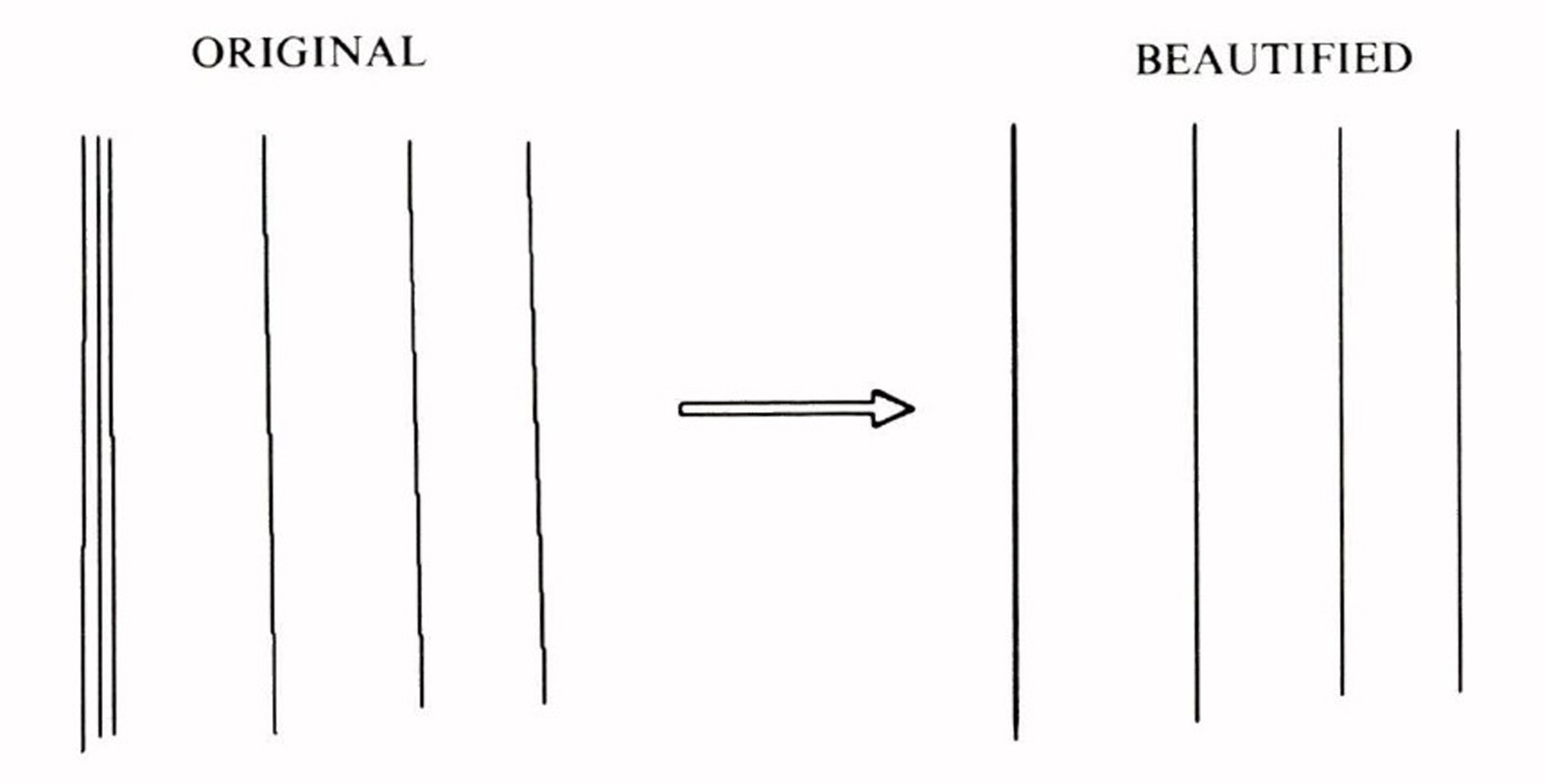“An automatic beautifier for drawings and illustrations” by Pavlidis and Van Wyk
Conference:
Type(s):
Title:
- An automatic beautifier for drawings and illustrations
Presenter(s)/Author(s):
Abstract:
We describe a method for inferring constraints that are desirable for a given (rough) drawing and then modifying the drawing to satisfy the constraints wherever possible. The method has been implemented as part of an online graphics editor running under the UNIX™ operating system and it has undergone modifications in response to user input. Although the framework we discuss is general, the current implementation is polygon-oriented. The relations examined are: approximate equality of the slope or length of sides, collinearity of sides, and vertical and horizontal alignment of points.
References:
1. Sutherland, 1. E., “Sketchpad: A Man-machine Graphical Communication System,” in 1963 Spring Joint Computer Conference. reprinted in Interactive Computer Graphics, H. Freeman, ed., IEEE Computer Soc., 1980, pp. 1-19.
2. Van Wyk, C. J., “,4 High Level Language for Specifying Pictures.” ACM Transactions on Graphics, 1(2) (1982), pp. 163-182.
3. Nelson, G., “Juno,” personal communication.
4. Pferd, W., and K. Ramachandran, “‘Computer Aided Automatic Digitizing of Engineering Drawings,” Proc. IEEE COMSAC, 1978, pp. 630-635.
5. Harris, J. F., J. Kittler, B. Llewellyn, and G. Preston, “‘A Modular System for Interpreting Binary Pixel Representations of Line-Structured Data,” Pattern Recognition Theory and Applications, Proc. of NATO Adv. Study Inst., Oxford, March-April, 1981, J. Kittler, K. S. Fu, and L. F. Pau, eds. D. Reidel Publishing Co., 1982, pp. 311-351,
6. Pavlidis, T., and Cherry, L. L., “Vector and Arc Encoding of Graphics and Text,” Proc. 1982 Intern. Conference on Pattern Recognition, 1982, pp. 610- 613.
7. Herman, M., “Generating Detailed Scene Descriptions from Range Images,” Proc. 1985 IEEE International Conference on Robotics and Automation, 1985, pp. 426-431.
8. Skinner, F. D., “The Interactive Wiring System,” IEEE Computer Graphics and Applications 1(2) (1981), pp. 38-51.
9. Wallich, P., “A review of engineering workstations,” IEEE Spectrum, 21(10) (1984), pp. 48-53.
10. Pavlidis, T., “PED: A ‘Distributed” Graphics Editor,” Proc. Graphics Interface “84, 1984, pp. 75-79.
11. Pike, R., “The Biit: A Multiplexed Graphics Terminal,” Bell System Technical Journal (Part 2), 63(8) (1984), pp. 1607-1631.
12. Pavlidis, T., Algorithms for Graphics and Image Processing, Computer Science Press, 1982.
13. Duda, R. O. and P. E. Hart, Pattern Classification and Scene Analysis, New York: J. Wiley, 1973.
14. Parzen, E., Modern Probability Theory and Its Applications, New York: J. Wiley, 1960.
15. Feller, W., An Introduction to Probability Theory and its Applications, Volume I. Third Edition. New York: J. Wiley, 1968.
16. Derman, E., and C. J. Van Wyk, “A Simple Equation Solver and its Application to Economic Modeling,” Software Practice and Experience 14(12) (1984), pp. 1169-1181




